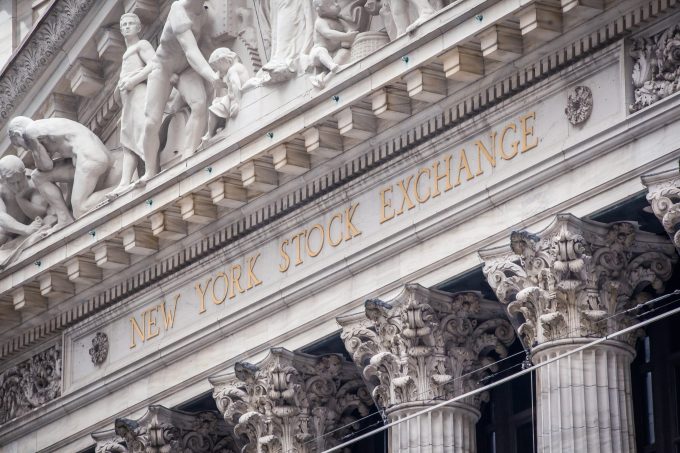As the 2025 crypto market continues its sluggish grind, with Bitcoin lagging far behind traditional equities, a sharp debate has emerged over the nature of the slump. While some analysts see a routine consolidation, others fear a more fundamental loss of momentum, as capital and attention pivot to hotter sectors like artificial intelligence.
The Case for Consolidation
Kevin McCordic, director of growth at Monad Foundation, represents the optimistic camp, framing 2025 as a necessary and “typical consolidation” following the catastrophic leverage crisis of 2022. He argues that today’s market jitters are modest in comparison to the “exchange implosions” and “cascading liquidations” that defined the 2022 bear market.
In his view, the crypto ecosystem is now firmly “embedded in global finance,” and the current drawdown, while uncomfortable, is simply the market digesting past failures before its next cyclical rebound. For investors subscribing to this thesis, the strategy is one of patience and positioning for the inevitable upswing.
As the 2025 crypto market continues its sluggish grind, with Bitcoin lagging far behind traditional equities, a sharp debate has emerged over the nature of the slump. While some analysts see a routine consolidation, others fear a more fundamental loss of momentum, as capital and attention pivot to hotter sectors like artificial intelligence.
The Case for Consolidation
Kevin McCordic, director of growth at Monad Foundation, represents the optimistic camp, framing 2025 as a necessary and “typical consolidation” following the catastrophic leverage crisis of 2022. He argues that today’s market jitters are modest in comparison to the “exchange implosions” and “cascading liquidations” that defined the 2022 bear market.
In his view, the crypto ecosystem is now firmly “embedded in global finance,” and the current drawdown, while uncomfortable, is simply the market digesting past failures before its next cyclical rebound. For investors subscribing to this thesis, the strategy is one of patience and positioning for the inevitable upswing.
The Fading Hype Argument
Castle Island Ventures’ Nic Carter offers a more sobering counter-argument. He contends that 2025 “feels worse” than 2022, not because of acute failures, but because crypto is “no longer the star of the show.” The primary driver of this malaise, in Carter’s view, is the massive shift in narrative and capital allocation toward AI.
With buyers thinning out and clear catalysts absent, Carter suggests the old market playbooks—such as predictable four-year cycles and “alt seasons”—are now obsolete. He argues that future gains will not come from speculative rotation but must be earned by “shipping products that deliver real user value.”
A Market Divided by Data and Sentiment
The quantitative data lends weight to Carter’s “capital shift” thesis. As of mid-November, Bitcoin ($BTC$) is up a mere 1.93% year-to-date. This performance pales in comparison to the 14.75% gain for the S&P 500 and the 18.77% surge in the tech-heavy Nasdaq Composite, illustrating a clear investor preference for equities and AI-related stocks.
This performance divergence presents a critical strategic question. If 2025 is merely a consolidation phase, as McCordic suggests, then assets at current prices represent a significant buying opportunity before the next cyclical upturn. However, if Carter is correct, then the market’s weakness reflects a more structural problem: a loss of mindshare and a new need to prove utility in a world where AI is capturing the speculative and technological spotlight.
The market now stands at a crucial juncture, caught between these two opposing views. The path forward will be determined by whether the industry can cultivate new, utility-driven catalysts to recapture investor interest or if it must simply wait for the market’s cyclical tides to turn, hoping that the capital that left for AI eventually returns.
Castle Island Ventures’ Nic Carter offers a more sobering counter-argument. He contends that 2025 “feels worse” than 2022, not because of acute failures, but because crypto is “no longer the star of the show.” The primary driver of this malaise, in Carter’s view, is the massive shift in narrative and capital allocation toward AI.
With buyers thinning out and clear catalysts absent, Carter suggests the old market playbooks—such as predictable four-year cycles and “alt seasons”—are now obsolete. He argues that future gains will not come from speculative rotation but must be earned by “shipping products that deliver real user value.”
A Market Divided by Data and Sentiment
The quantitative data lends weight to Carter’s “capital shift” thesis. As of mid-November, Bitcoin ($BTC$) is up a mere 1.93% year-to-date. This performance pales in comparison to the 14.75% gain for the S&P 500 and the 18.77% surge in the tech-heavy Nasdaq Composite, illustrating a clear investor preference for equities and AI-related stocks.
This performance divergence presents a critical strategic question. If 2025 is merely a consolidation phase, as McCordic suggests, then assets at current prices represent a significant buying opportunity before the next cyclical upturn. However, if Carter is correct, then the market’s weakness reflects a more structural problem: a loss of mindshare and a new need to prove utility in a world where AI is capturing the speculative and technological spotlight.
The market now stands at a crucial juncture, caught between these two opposing views. The path forward will be determined by whether the industry can cultivate new, utility-driven catalysts to recapture investor interest or if it must simply wait for the market’s cyclical tides to turn, hoping that the capital that left for AI eventually returns.












https://shorturl.fm/Qjdkm